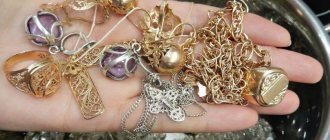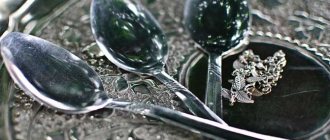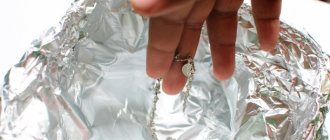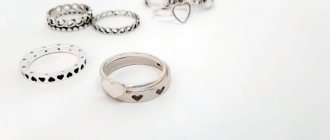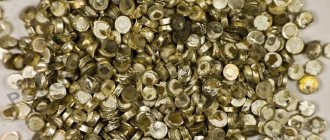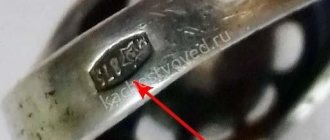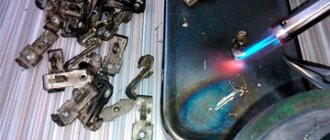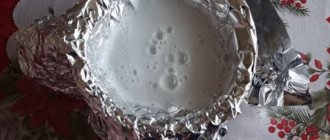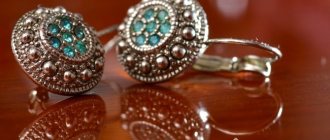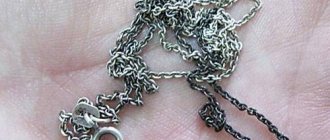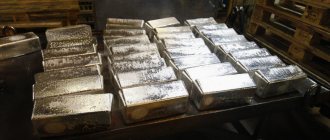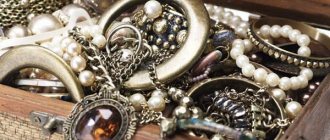The essence of the refining procedure
To extract pure silver, special technologies are used to purify it from various impurities, the totality of which is called refining. Silver is purified in various ways, which consist of several stages, stages to remove excess impurities. Each of them uses its own physical and chemical refining methods for dissolving and separating this element from other substances.
Ways to clean silver yourself at home:
- chemical;
- cupellation;
- electrolysis.
Silver refining at home
The raw materials used are:
- jewelry scrap;
- sludge from electrical silver cleaning;
- “silver foam” – waste from lead purification;
- technical silver – radio components, etc.
Where is silver found?
The main source of technical silver is radio equipment and electrical industrial equipment of Soviet production.
You need a considerable number of “silver plated” contacts, which
can be extracted from the following devices, radio components and devices that have expired:
- mine magnetic starters;
- mine substations;
- relay;
- temperature sensors;
- communication equipment;
- electrical computer equipment of modern and ancient production.
Necessary tools and materials for refining
To refining silver chemically you will need:
- special glassware;
- quartz stick;
- nitric and sulfuric acid;
- ammonium chloride;
- sodium sulfide;
- salt;
- paper filter;
- funnel;
- deionized water;
- scales;
- copper scrap or zinc powder;
- special protective equipment - gloves, goggles, gown, respirator.
For cupellation:
- bake;
- crucible;
- lead.
For electrolysis:
- power unit;
- insulation tube;
- brass stick;
- stainless steel fork;
- insulating tape;
- tea filter (bag);
- plastic container (can be from a bottle).
Refining methods at home
The choice of method depends on the quantity, condition of the raw materials and continuity of production. The chemical method of refining silver is easier to perform, but the output produced is silver that is not always of a high enough standard. Low grade, with an admixture of other elements comes out during cupellation. The purest, highest quality is obtained by electrolysis.
Chemical method No. 1
Nitric acid, deionized water, scale, glass container and quartz rod for silver refining
Objects containing silver are placed in nitric acid. To do this, prepare a mixture of water and acid (1:1 ratio) and stir with a quartz stick. The dissolution of the metal occurs over several hours. The solution turns blue and silver nitrate is formed.
The next stage is the formation of silver plaque from its nitrate. To do this, copper scrap (pipes or other objects) is used, which is first thoroughly cleaned of deposits and contaminants. Copper acts as a catalyst.
After placing copper pieces into the solution, they are quickly covered with a white coating - silver cement. It must be periodically removed and shaken to the bottom of the jar. Copper gradually dissolves in silver nitrate and therefore, if necessary, it must be added until the reaction completely stops.
Then the solution is filtered, the cement is washed several times with clean water, dried well, and collected into a single piece when heated in a crucible. The metal turns out to be of low standard (up to 980), so it must then be further purified by electrolysis.
Chemical method No. 2
"Wet" method of silver refining
Technical elements containing silver are immersed in nitric acid. The liquid gradually turns blue. Then the silver solution is poured into another container, and table salt is gradually added to it while stirring. A chemical reaction occurs and a white precipitate falls to the bottom - silver chloride.
When the reaction ends, the water must be drained. Sulfuric acid is poured into the resulting precipitate to separate it into pure metal and its salt. Then zinc powder is poured in. After its complete dissolution, silver cement is evaporated from sulfuric acid, which precipitates. It is washed, dried, and melted into an ingot. The result is a white precious metal of 99%, the highest standard.
Cupellation
Melting silver in a crucible
Silver refining using this method is based on the unique ability of lead to oxidize. Then it, along with other impurities, is separated from the silver. But gold and platinum group metals remain, and then they need to be separated by other methods.
Cupellation is carried out in a preheated oven, which is covered inside with marl - a porous clay enriched with limestone that absorbs lead oxides. A bowl-shaped crucible with a lead-silver mixture is placed inside. When it is completely melted, air flows are launched to oxidize the lead. The output is an alloy with a rainbow shimmer, which is poured into molds.
Electrolysis
To obtain silver of the highest standard, the white metal is refined by electrolysis. To do this, an electrolytic bath is constructed from a plastic container, which is filled with a solution of nitrate of this white precious metal, diluted with water in a 1:1 ratio.
Silver refining by electrolysis
The bar obtained from silver cement using the previous method is placed in a filter bag. First you need to weld a loop of silver wire to it, to which the silver ingot will cling to a brass stick. It is threaded along the edges of the filter bag and is located above the bathtub. The place where the silver loop and the bar are welded must be above the liquid level so that the metal does not dissolve.
The stainless steel fork is bent so that it can be hung on the side of the bath, the handle is wrapped with electrical tape. The “minus” cable is connected to the plug placed in the bath, and the “plus” cable is connected to the brass stick. The voltage should be no more than 8 V, power up to 5 A.
After turning on the power supply, the reaction begins immediately. The bar decreases in size, and the walls of the bath are covered with crystals of purified white metal. They need to be broken off periodically so that they do not reach the filter bag, to prevent short circuits. After the process is completed, debris remains in the filter, and clean crystals must be collected from the walls of the container, dried and fused into an ingot. This refining of silver produces 999 fine metal for the manufacture of jewelry.
Cupellation
Cupellation is used in the refining of low-grade alloys. This method does not allow the separation of platinum and gold; silver is mined from alloys with lead. This method uses a special marl-lined oven with a cup-shaped crucible.
The method is based on the ability of lead in an alloy with silver to oxidize in air and separate from the metal along with impurities. Marl is a porous limestone clay that absorbs lead oxide. During the cupellation process, lead oxide evaporates under the influence of air flow. Refining is considered complete when the alloy surface has a rainbow color. When this type of paint cracks, you can see the bright shine of the silver metal.
Filtering stage
Necessary Items for Silver Filtration
To separate silver from the solution after the chemical refining procedure, you will need filter paper and a funnel. The solution with silver cement is poured into a container through a prepared filter - the copper salt flows off, and white metal remains on the parchment in the form of cement powder. This filtrate must be additionally washed several times with distilled water.
The drained solution contains a small percentage of silver, which can be extracted by adding table salt. After some time, a cheesy sediment will appear - silver cement.
All the resulting silver powder is dried and then fused. To avoid loss of silver dust, equal proportions of borax and baking soda can be added to the top of the crucible, which will create a protective glassy film.
In this way, a low-grade silver alloy is obtained. Next, it is necessary to carry out electrolytic refining to purify the white precious metal to a high purity.
Filtered liquid
Safety precautions during refining
When carrying out chemical methods for purifying silver, it is necessary to ensure good ventilation of the room, and it is better to do everything in the open air. As protective equipment, you need to use rubber gloves, special goggles, a robe, and when working with nitric acid, a respirator, because nitrogen vapor, if it enters the lungs, can cause paralysis of the upper respiratory tract. Do not pour water into acid to avoid splashing this caustic liquid. You can only add the concentrate itself to the water.
What clothes should you wear for the refining procedure?
Related video: How to remove silver by electrolysis
Useful articles
The process of chrome plating metal products at home
Carrying out gold refining at home
What is the price of one gram of silver today
Using soda
You can also get silver particles using regular soda. To do this, dry chloride must be mixed with sodium carbonate, the weight of the ingredients must be the same. After this, the entire mixture is thoroughly mixed in a special crucible, which should only be filled halfway. This should be done because when gases are released during the reaction, the mass increases by almost half.
After the gas stops evolving, the temperature must be raised to the melting level. Next, the mixture is cooled, the resulting metal is removed from the crucible, melted again, after which an ingot is formed.
The undeniable advantage of this method is that the required metal is obtained very quickly, there is no need to carry out numerous complex steps. But there is also a decisive disadvantage associated with the use of soda, the main material for the reaction. The fact is that soda has a destructive effect on crucibles for melting metal, that is, they have to be changed frequently with constant use.
